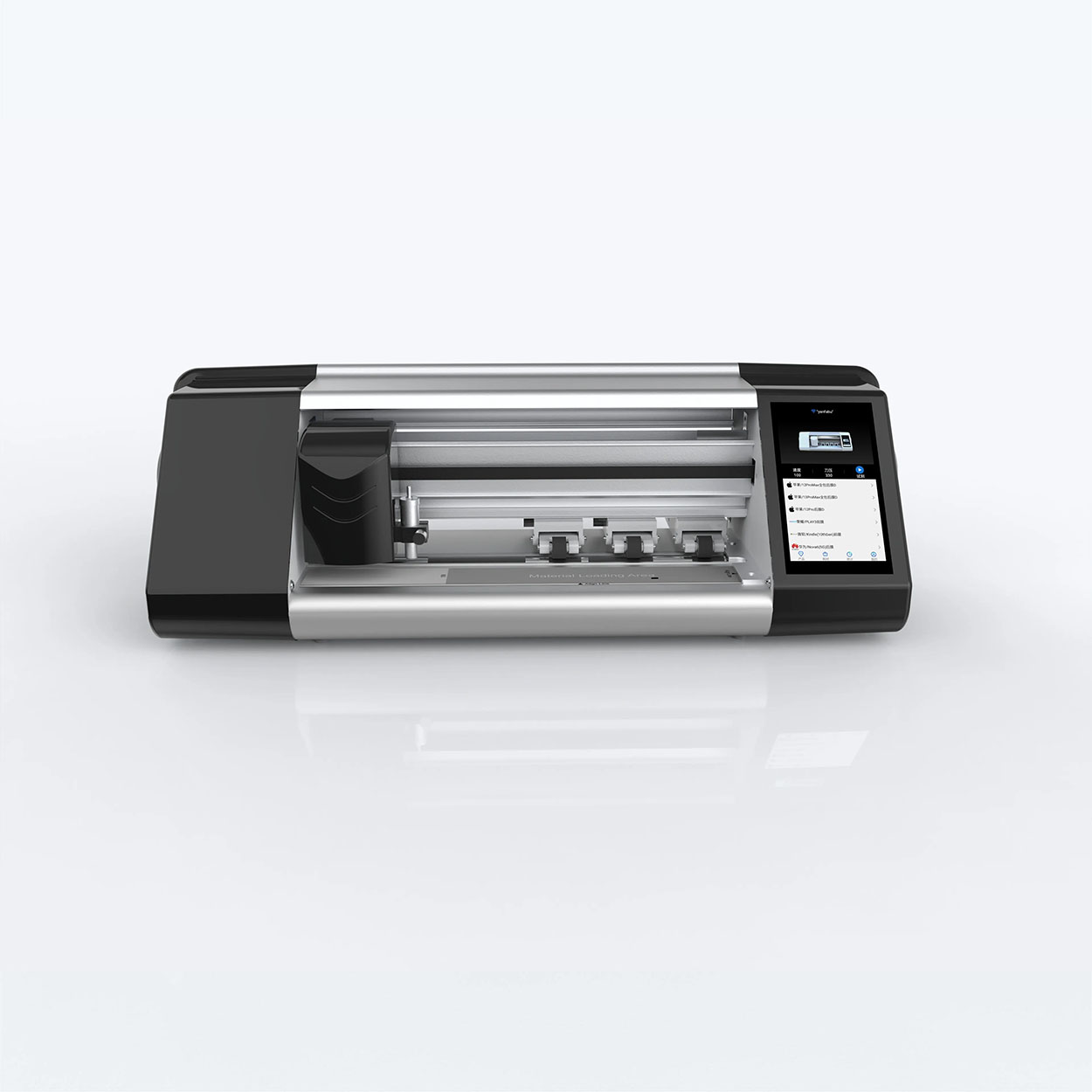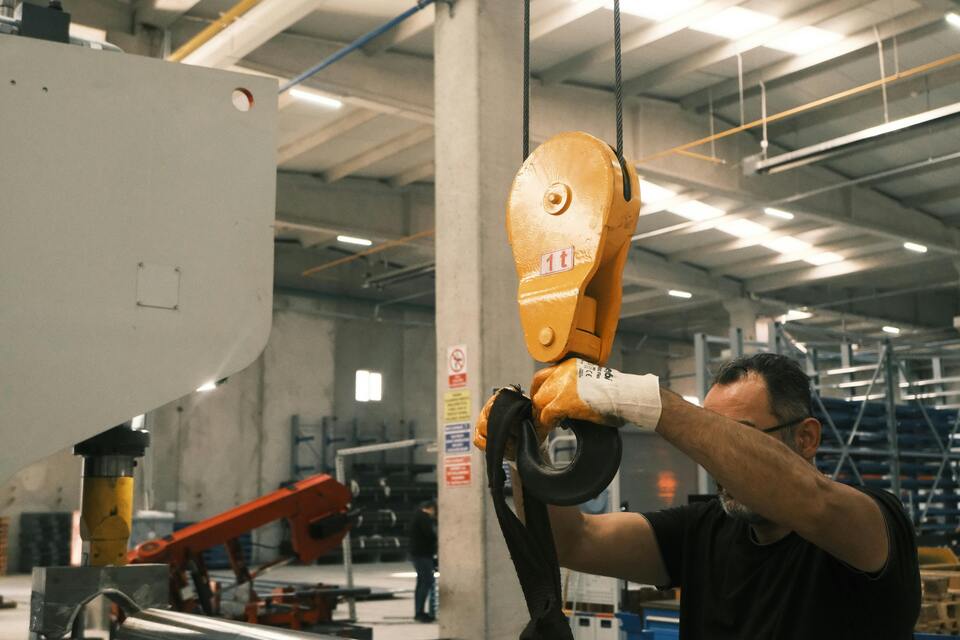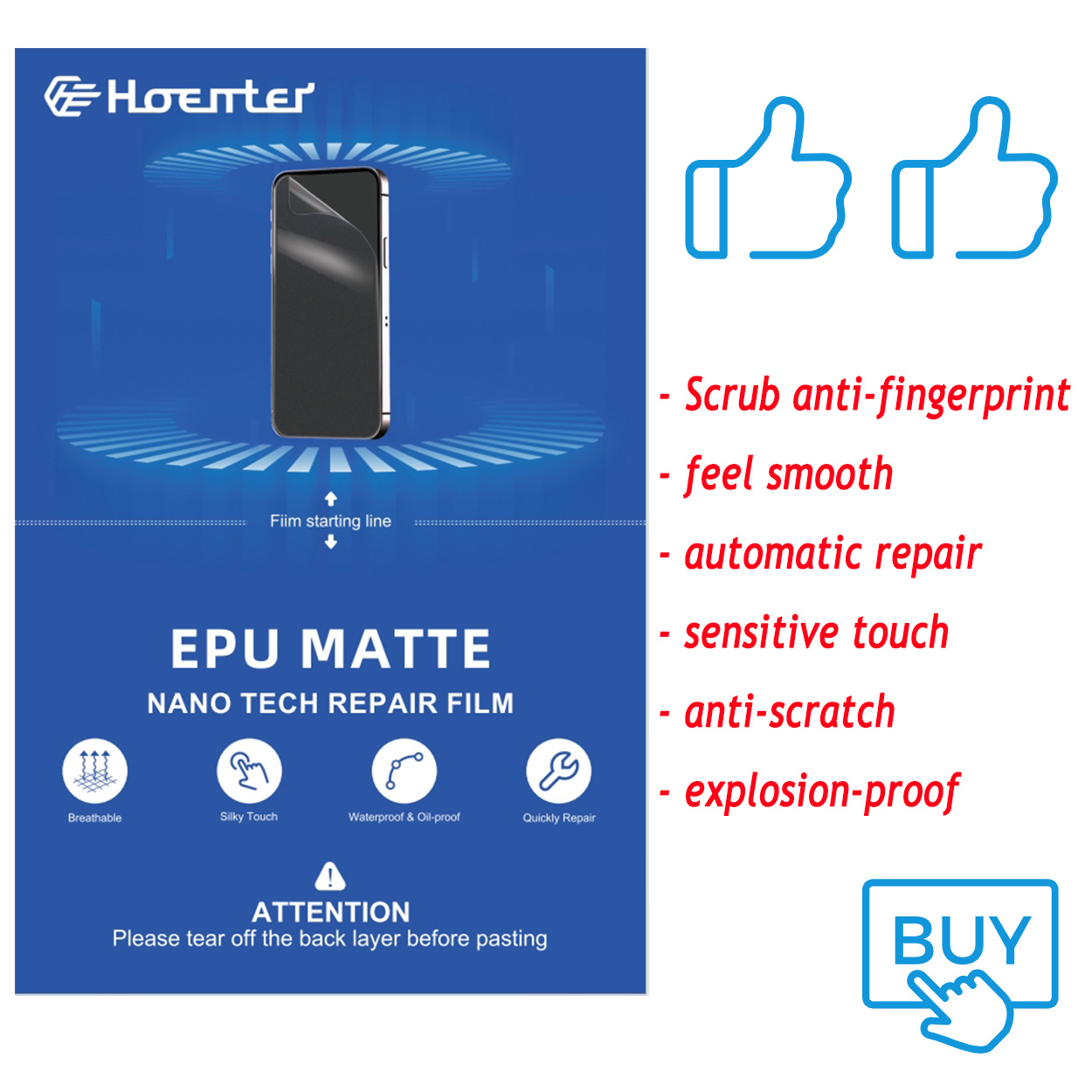
Is It Worth Investing in a High-End Phone Screen Protector Machine?
Table of Contents
Extract
Summary
Is It Worth Investing in a High-End Phone Screen Protector Machine? Investing in a high-end phone screen protector machine involves careful consideration of market dynamics, consumer trends, and potential returns. With over 95 million smartphones damaged annually due to drops, the demand for effective screen protectors continues to rise, driven by increasing consumer awareness of repair costs, especially for uninsured devices.
This context underscores the significance of the phone screen protector market, which is expected to evolve alongside innovations in technology and changes in consumer behavior as we approach 2024. Consumer trends indicate that buyers are becoming more discerning due to economic pressures, leading to a heightened focus on value and quality in their purchasing decisions. High-end screen protector machines can produce superior products using advanced materials and customization options, meeting the evolving expectations of consumers who seek both protection and additional functionality in their accessories. As such, potential investors must evaluate how these trends align with the capabilities of high-end machinery. Despite the promising market conditions, investing in such machines carries inherent risks, including fluctuations in market demand and the competitive landscape. Investors need to balance these risks with the opportunity for higher returns that come from producing premium products. Moreover, considerations around operational costs, technological advancements, and consumer spending patterns play a critical role in shaping investment strategies in this space. The decision to invest in high-end phone screen protector machinery ultimately hinges on a comprehensive understanding of both market potential and the economic environment. By weighing the risks against the potential benefits and aligning investment choices with consumer preferences, stakeholders can navigate this evolving market landscape effectively.
Market Overview
The market for phone screen protectors is influenced by various factors including consumer behavior, economic conditions, and product innovations. With over 95 million phones damaged each year due to drops, there is a significant demand for protective solutions that can safeguard devices from impact and scratches
. The increasing awareness among consumers regarding the costs associated with screen repairs—especially for devices not covered by insurance—further fuels the need for effective screen protectors.
Consumer Trends
As we move into 2024, consumers are expected to become more discerning in their purchasing decisions. Economic pressures such as cost fatigue and rising debt are leading to a more cautious approach towards spending
. This environment prompts consumers to prioritize value and budgetary savings when selecting products, including screen protectors. Marketers must navigate these changing preferences by emphasizing product quality and durability, particularly as consumers are more inclined to invest in protective accessories that promise long-term savings on repairs.
Product Innovation
Innovations in screen protector technology are also reshaping the market landscape. The introduction of advanced materials, such as tempered glass and anti-glare coatings, has enhanced product performance and user experience. For example, certain brands are now offering features like fingerprint resistance and privacy options, which cater to specific consumer needs
. This trend towards customization and added functionality in screen protectors aligns with the growing consumer expectation for products that deliver not just protection but also added value.
Economic Impact
The overall economic climate plays a critical role in shaping the market for phone screen protectors. While consumer spending is projected to grow modestly at 1.3% in 2024, businesses will need to adopt strategies to retain customer loyalty amid tight financial conditions
. Loyalty programs and promotions could be key in encouraging repeat purchases, especially in a market where price sensitivity is high. Understanding these dynamics is essential for businesses looking to position their products effectively in a competitive market.

Investment Considerations
Investing in a high-end phone screen protector machine involves various factors that can significantly affect the potential returns and risks associated with the investment. Understanding these elements is crucial for making an informed decision.
Types of Investments
The investment in a high-end phone screen protector machine can be classified as a capital investment, where resources are deployed to purchase machinery aimed at generating income through sales of screen protectors. This type of investment often involves initial costs for the machine, materials, and operational expenses, alongside expected future returns in the form of revenue generated from product sales
.
Risk and Return
As with any investment, there exists a relationship between risk and return. The investment in a manufacturing machine can entail various levels of risk, including market demand fluctuations, technological advancements, and competition. Higher potential returns typically come with higher risk, as investing in advanced machinery may also require significant ongoing maintenance and operational expertise
. For instance, while a high-end machine may produce superior products that could command a higher market price, it also necessitates the ability to efficiently manage production costs and respond to market changes.
Market Demand
Evaluating the market demand for phone screen protectors is critical. With the increasing reliance on smartphones, there is a growing need for protective accessories. The annual on-demand consumer spending in related sectors has been rising, suggesting a positive market environment for products like screen protectors
.
Investment Vehicles
Potential investors might choose to independently invest in such machinery or seek partnerships or financing through established companies specializing in electronics or manufacturing. Engaging with an investment advisor can also provide valuable insights into whether this investment aligns with one’s financial goals and risk tolerance
.
Economic Considerations
Investors should also take into account economic factors such as inflation and consumer spending patterns. For example, an investment made today may yield different returns over time, especially if inflation reduces the purchasing power of future income. Additionally, the competitive landscape of the screen protector market can influence pricing strategies and profit margins, thereby impacting overall returns
.
Technology and Features
The landscape of smartphone technology is rapidly evolving, with manufacturers continually introducing innovative features that enhance user experience and engagement. As highlighted during CES 2019, the anticipation for foldable devices, 5G-enabled handsets, and advanced camera systems is indicative of a shift toward more sophisticated functionalities in smartphones
. These developments are not just about creating buzz; they reflect a deeper understanding of consumer desires, particularly regarding improvements in core features such as battery life, which remains a significant frustration for users in both the UK and U.S..
Disruptive Innovations in Technology
Historically, technological advancements have followed patterns of disruption, where innovations gradually replace established products through improved functionalities and cost reductions
. The integration of various technological breakthroughs has led to sophisticated devices like the iPhone, which combine multiple innovations—from touch screens to GPS—developed over time. As companies invest in disruptive technologies, they aim to harness collective value and competitive advantages in the market.
Virtual Machines and Their Applications
In the realm of software, virtual machines (VMs) play a crucial role in enhancing application performance and ensuring platform independence. Two main types of VMs—system VMs and process VMs—serve distinct purposes in optimizing computing resources. System VMs emulate physical hardware to run multiple operating systems concurrently, while process VMs focus on executing specific applications within a secured environment
. This flexibility allows for resource optimization, making it easier for developers to create cross-platform applications that can be executed seamlessly on different hardware configurations.
Consumer Electronics Trends
As technology evolves, consumer electronics manufacturers have also recognized the importance of delivering well-conceived and user-friendly products. The emergence of “basics”—simpler, well-designed electronics that incorporate essential features without unnecessary complexities—reflects a growing market for accessible, high-quality devices
. This trend underscores the need for companies to innovate while also addressing consumer preferences for straightforward, effective products that meet their everyday needs.

Case Studies
Personalization in Retail
A study on personalization programs in retail indicates that these initiatives significantly enhance customer engagement and sales performance. Retailers implementing personalized experiences reported a remarkable 20% increase in customer satisfaction, alongside a 10 to 15% boost in sales conversion rates
. Additionally, companies excelling in customer experience provided their shareholders with returns that were three times higher than those of their less customer-centric counterparts. These findings highlight the efficacy of personalization in driving both customer loyalty and financial returns.
Phone Case Industry Dynamics
The proliferation of phone cases reflects a burgeoning market driven by consumer demand for protection and aesthetics. Cases are designed to enhance grip, particularly for premium devices with glass or smooth plastic backs, which are prone to slipping
. Moreover, specific cases offer significant drop resistance, employing thick materials that enable users to drop their phones from considerable heights without damage. This industry has grown as manufacturers respond to varying consumer preferences, from slim designs that maintain the phone’s aesthetic appeal to bulkier options providing superior protection.
Innovations in Health Monitoring
In the healthcare sector, advancements in technology have paved the way for innovative solutions aimed at monitoring physical and mental health. Research prototypes are already underway, indicating a shift towards more personalized and responsive health care systems that can significantly benefit from data collection and analysis capabilities
. These innovations could leverage the insights garnered from personal health data to enhance patient care and outcomes.
Operations Management Decisions
Operations managers play a crucial role in determining production strategies within firms. Their decisions on methods such as make-to-order, mass production, or mass customization directly influence efficiency and customer satisfaction
. By analyzing demand forecasts and site selection for manufacturing, operations managers can optimize resource allocation and reduce costs while ensuring timely product delivery, showcasing the importance of strategic planning in production processes.
Virtual Machines in Business
The utilization of virtual machines has emerged as a critical innovation for businesses seeking flexibility and scalability. By consolidating multiple workloads on a single physical server, organizations can significantly reduce hardware costs and optimize resource usage
. Virtual machines allow for dynamic resource allocation, enabling businesses to swiftly adjust to changing demands without the need for additional physical infrastructure, thus enhancing operational efficiency.
Data-Driven Personalization
Companies embracing data-driven personalization have observed considerable revenue increases, with studies showing a typical revenue lift of 10 to 15% attributed to these strategies
. Organizations that effectively leverage data to build customer intimacy not only enhance their marketing efforts but also improve long-term customer loyalty and retention. This indicates that a focus on personalization can be a key driver of business success in today’s competitive landscape.
Risks and Challenges
Investing in a high-end phone screen protector machine presents a variety of risks and challenges that potential buyers should carefully consider.
Adverse Effects and Failure Recovery
One of the primary concerns is whether the solution could cause adverse aftereffects, particularly in terms of product quality and user satisfaction
. Additionally, understanding how data can be recovered in case of a machine failure is crucial, as operational disruptions could lead to significant losses. It is essential to have a robust plan for recovery to minimize downtime and maintain service levels.
Cost-Benefit Analysis and Operational Risks
The cost-benefit analysis associated with undertaking risks in this investment is critical. Stakeholders must evaluate the long-term implications of the risks they are willing to take and whether these risks are reversible or not
. Furthermore, operational costs should be kept low while delivering increased value to users, which can be a challenging balance to strike in a highly competitive market.
Support and Maintenance Considerations
Support considerations also play a significant role in mitigating risks. Effective communication from the support team regarding common issues is vital to user satisfaction and can help alleviate potential frustrations
. Organizations must ensure that users can interact with the machine with minimal support, which raises the question of who will be responsible for its ongoing maintenance. Knowledge transfer protocols should also be established to prepare for any potential unavailability of the project owner.
Impact of External Factors
External pressures, such as the evolving landscape of consumer technology and market trends, can also pose risks. As noted by various experts, the rapid pace of technological innovation may lead to unpredictable challenges, including ethical concerns associated with new technologies and their long-term viability
. Companies must remain vigilant to adapt to these changes and the potential negative consequences they may bring.
Comments

Wholesale Self Screen Protector Self Healing
Looking for wholesale self healing flexible screen protectors? We offer premium EPU film with unbeatable protection and a perfect fit. Contact us!

Screen Protector Cutting Machine Price Comparison: Entry-Level vs. High-End
Screen protector cutting machines are essential tools for businesses in the mobile accessories market, allowing for the customization and production of screen protectors for various devices.

EPU Matte Anti Fingerprint Screen Protector Hydrogel Film
EPU Hydrogel Film Screen Protector offers versatile, high-performance protection for a wide range of devices, including smartphones, tablets, and smartwatches. Its universal compatibility with phone film cutting machines makes it an ideal choice for various models, ensuring seamless application and full-edge coverage. With advanced features such as anti-fingerprint, water resistance, and self-healing technology, this screen protector not only maintains a pristine display but also provides durable protection against scratches, glare, and everyday wear. Whether for personal use or professional cutting machines, this hydrogel film delivers reliable performance and long-lasting screen clarity.

Hoenter Clear Film: Any Device, Any Size
Wholesale Hoenter Clear Film: Offer custom-fit screen protectors for any device. Reduce waste, maximize profits, and increase customer satisfaction.

How to Apply a Screen Protector to a Camera?
By following these steps and tips, you’ll ensure your camera lens remains protected and ready to capture stunning images. Happy shooting!
Tags
Find All knowledge and trends from our blog, get the wholesale price and best quality from our factory.

What Film Cutting Machine and Its Application
Film cutting machines have played a crucial role in the evolution of filmmaking and various industrial processes by enabling precise cutting and splicing of film materials.

What Is a Screen Protector Cutting Machine?
A screen protector cutting machine is a specialized device designed to produce custom-fit screen protectors for various electronic devices, including smartphones, tablets, smartwatches, laptops, and monitors.

How Mobile Phone Screen Protector Cutting Machine Work?
A mobile phone screen protector cutting machine is a sophisticated device designed
to produce customized screen protectors for various digital devices with high preci
sion and efficiency.

Characteristics of Mobile Phone Tempered Glass and Mobile Phone TPU Screen Protector
Thermoplastic polyurethane (TPU) screen protectors are flexible, durable, and
self-healing plastic films designed to protect electronic device screens from
scratches, impacts, and other potential damages.

Revolutionize Device Protection with Screen Guard Cutting Machine
Whether you possess a smartphone, tablet, or smartwatch, this versatile machine accommodates a vast array of devices. It seamlessly adapts to the dimensions of your gadget, offering a custom fit that generic protectors can’t match.

Screen Protector Lifetime Warranty
A screen protector lifetime warranty is a guarantee provided by manufacturers that
promises to repair or replace a screen protector for the lifetime of the product, under specific terms and conditions.





